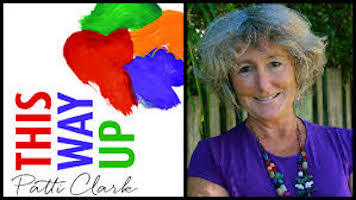 “The goal of resilience is to thrive, and we all want to thrive. Resilience has been defined as that quality that allows some people face adversity and come back even stronger than before” says author Patti Clark.
“The goal of resilience is to thrive, and we all want to thrive. Resilience has been defined as that quality that allows some people face adversity and come back even stronger than before” says author Patti Clark.
She says much has been written about the ageing process and resilience. Taking the lead from this, she aims to help people reframe, find character strength and inspiration if they are feeling a little less resilient than they’d like to be.
“If you can’t change it, change the way you think about it,” she says.
“Psychologists have identified some of the factors that make someone resilient: a positive attitude and optimism certainly help; even after difficult circumstances, such as an earthquake, resilient people are able to shift course and carry on.
“The good news is that resilience can be taught. In research at Columbia, the neuroscientist Kevin Ochsner has shown that teaching people to think of stimuli in different ways—to reframe them in positive terms when the initial response is negative, or in a less emotional way when the initial response is emotionally “hot”—changes how they experience and react to the stimulus” she says.
But as we age and face difficulties, it’s easy to feel less than resilient.
“It’s easy to lose touch with that sense of resilience, and instead struggle on with feeling purposeless and directionless. It is very easy to fall into a sense of listlessness and ‘stuck-ness,’” she says.
“Resilience is such an important character strength in Positive Psychology. A resilient person works through challenges by using personal resources, strengths and other positive capacities of psychological capital such as hope, optimism and self-efficacy. Being resilient is linked with a person’s happiness.”
Patti is the author of This Way Up: Seven Tools for Unleashing Your Creative Self and Transforming Your Life. Her process, Creative Positive Reframing (CPR), identifies three key actions that people can take right now to create resilience: Identify, Reframe and Embed.
She wants to alter this belief that ‘nothing will change’ to avoid it becoming embedded in the brain, creating a negative neural pathway. A neural pathway is the way that information travels through the neurons, or nerve cells of the brain. We create new neural pathways every time we hear or experience something new. The more we experience something, the more embedded this pathway becomes.
Changing neural pathways is not an easy task once they are deeply embedded, but it is a set of skills that can be taught, Patti explains. To create change:
- Identify Negative Messages
Action: We all have them – limiting beliefs that have become embedded in our head. Negative thoughts such as, “I can’t do it!” Or “It’s too hard!” are self-sabotaging.
Practice: Interrupt it – once you’ve identified those negative messages, shift your focus. Take a deep breath and interrupt your own train of thought . . . and get rid of it!
- Reframe the negative with positive statements
Action: Negative self-talk can be replaced by positivity with the help of a series of deliberate affirmations or questions. This creates new neural pathways and frees you from the negative spiral.
Practice: Affirm it – create positive statements and questions. Affirmations often work, but sometimes questions work better. If your affirmation is, “I can do it. This is easy!” and your brain argues back, “No you can’t It’s too hard!” then use a question instead. Something like: “What can I do today to move forward?” Or mix the two in this way: “I am moving forward easily and effortlessly. What can I do today to move forward?”
- Embed it – use creative visualisation to picture the ideal and embed it in your brain
Action: This next step takes the previous step and solidifies it; it is a powerful process. Creative visualisation is a technique which uses your own power of ‘seeing’ to attain that which you most want or want to change. You already use this technique every day. Unfortunately, we often use it in the negative by imaging all the things we DON’T want.
Practice: Visualise it! The key to visualisation is to first see what you want, and then create a mindset that you already have it and you believe you deserve it. Relax and be sure you won’t be interrupted. Close your eyes and let the movie of you having your heart’s desire run in your mind. Enjoy the process. The more you do this, the more deeply embedded this vision becomes.
So, the next time you find yourself falling into a negative spiral about yourself and are feeling hopeless and stuck, try using the tools that neuroscience has shown to be effective, by reframing your thoughts in positive terms. Use these tools to tackle limiting beliefs, and transform that negativity into something that is supportive rather than destructive.









Join the Discussion
Type out your comment here:
You must be logged in to post a comment.